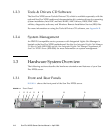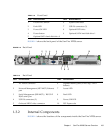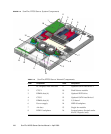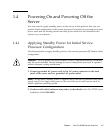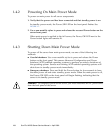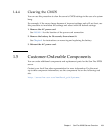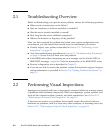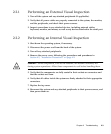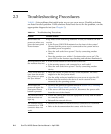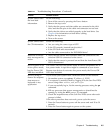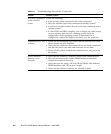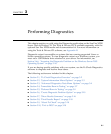
2-2 Sun Fire X2250 Server Service Manual • April 2009
2.1 Troubleshooting Overview
Before troubleshooting your specific server problem, answer the following questions:
■ What events occurred prior to the failure?
■ Was any hardware or software modified or installed?
■ Was the server recently installed or moved?
■ How long has the server exhibited symptoms?
■ What is the duration or frequency of the problem?
After you have assessed the problem and noted your current configuration and
environment, you can choose from several ways to troubleshoot your server:
■ Visually inspect your system as described in Section 2.2, “Performing Visual
Inspections” on page 2-2.
■ View the troubleshooting procedures in Section 2.3, “Troubleshooting Procedures”
on page 2-4 to see if any of them solve the problem.
■ If the BIOS halts without displaying an error message, see the Port 80 LED for
BIOS POST messages. Appendix B lists the descriptions of the BIOS POST codes.
■ Execute a diagnostics test as described in Chapter 3.
■ If you are not able to resolve the problem, contact Sun technical support. Support
contact information is provided in Section 2.4, “Getting Technical Assistance” on
page 2-7.
2.2 Performing Visual Inspections
Improperly set controls and loose or improperly connected cables are common causes
of problems with hardware components. When investigating a system problem, first
check all the external switches, controls, and cable connections. See Section 2.2.1,
“Performing an External Visual Inspection” on page 2-3.
If this does not resolve your problem, then visually inspect the system’s interior
hardware for problems, such as a loose card, cable connector, or mounting screw. See
Section 2.2.2, “Performing an Internal Visual Inspection” on page 2-3.



